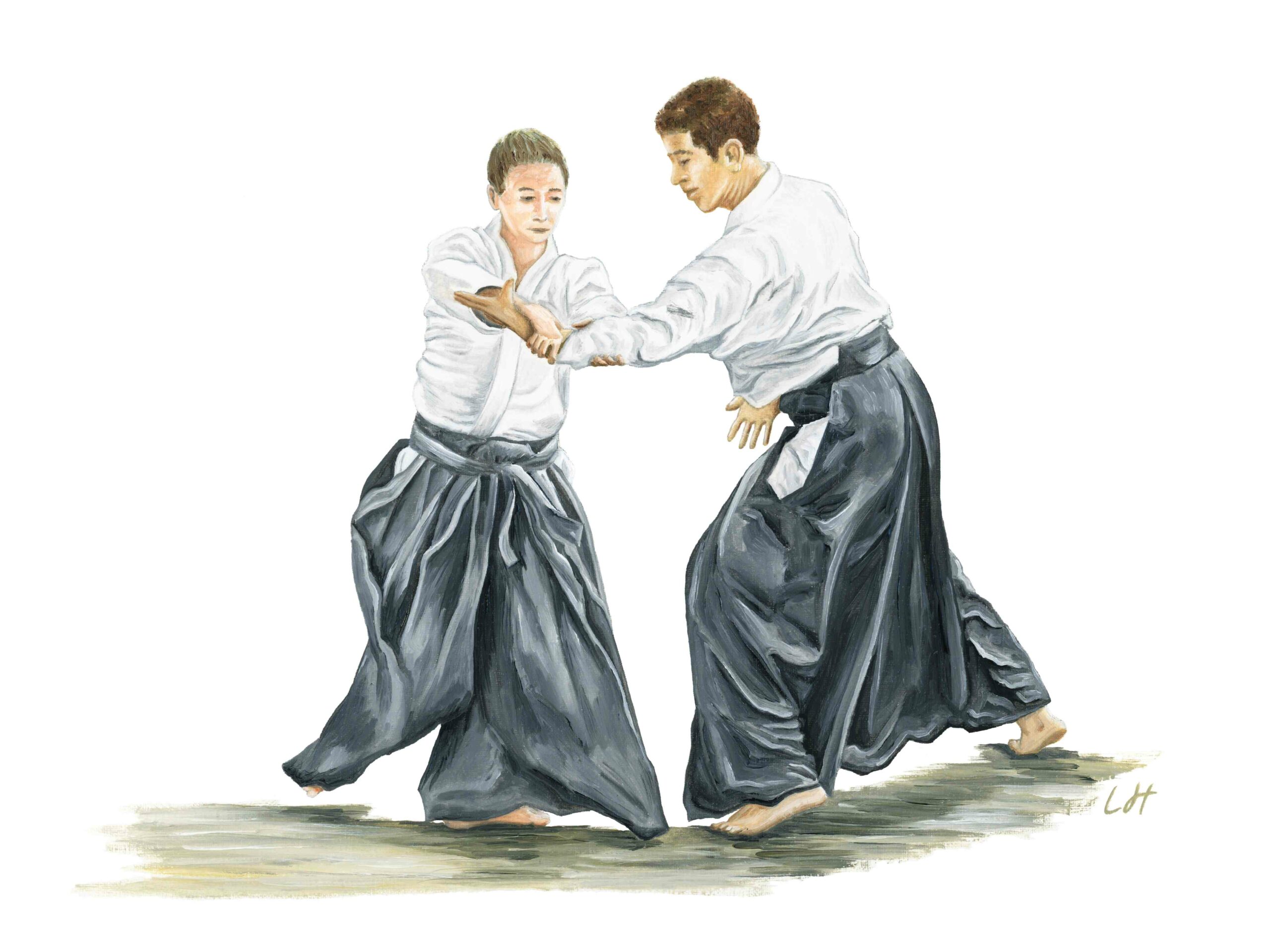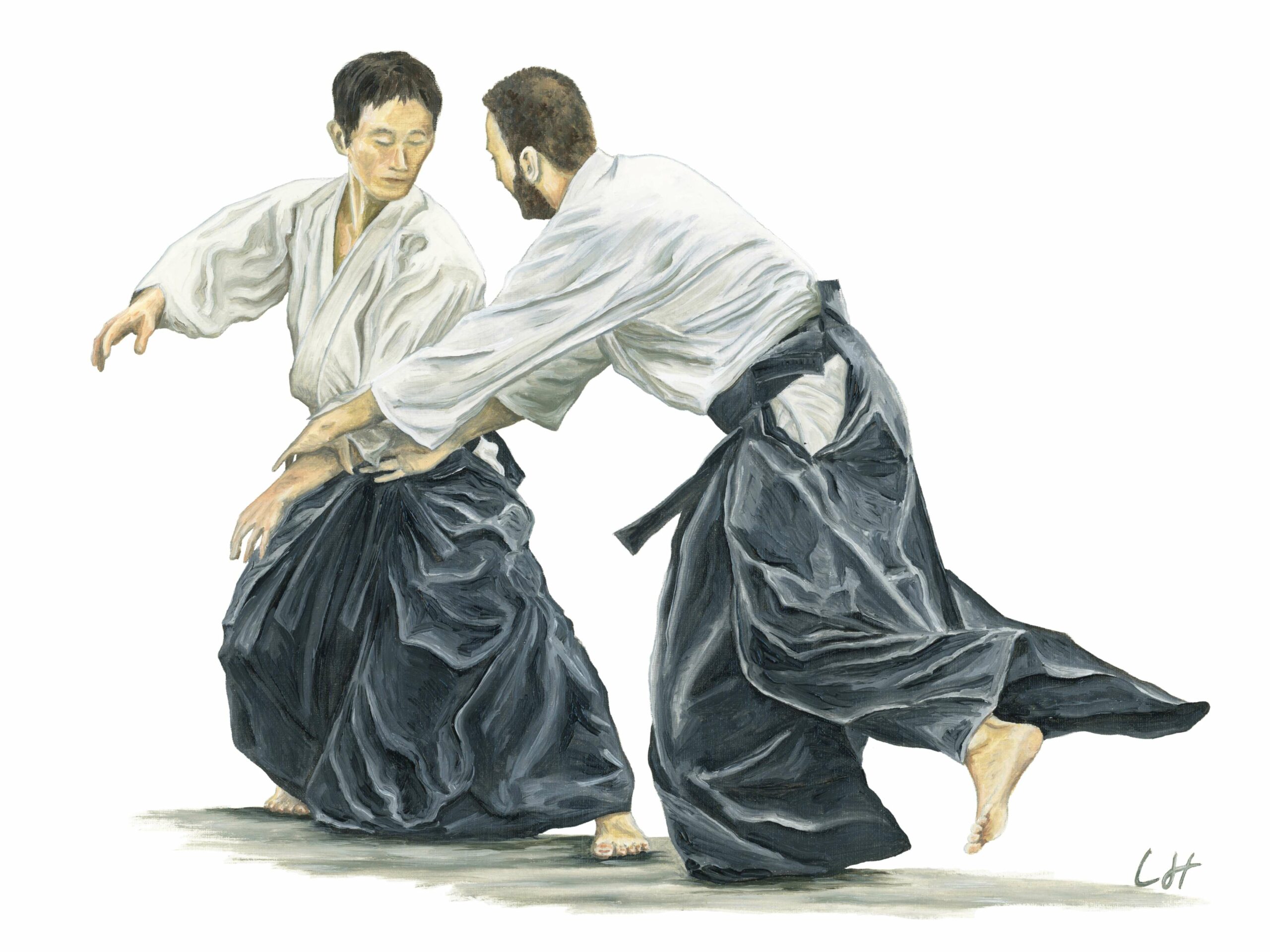A friend recently asked me what the martial arts bring me most.
I think that, speaking of aikido, what regular practice brings me most is connection with others. This may seem paradoxical from the outside, since, as in many other martial arts, what we observe is a strike, an attack and a defense, immobilization or counter-attack technique. It would be legitimate to say that the regular practice of these antagonistic situations cultivates opposition, competitiveness, the desire to win, to be superior.
This may well be true of other martial arts, particularly given their competitive nature. But I don’t know them from the inside and I wouldn’t say so. On the other hand, I can speak about aikido and tell you that it’s the exact opposite that is cultivated on the tatami.
Aikido techniques involve making an opponent lose his balance by mobilizing his center of gravity. They can be effective in fights where the aim is to win. They can be destructive if desired. But using these techniques in a context of real adversity, and with a person unfamiliar with the practice, is not aikido.
In an aikido class, we’re not with an opponent, but with a partner, also an aikidoka. The whole point of aikido is to connect with your partner. He gives us energy, a direction, and we connect with him. We seek to deflect this energy, with a view to projecting or immobilizing the person playing the role of attacker. And because he too is an aikido practitioner, he accepts the deflection and continues the movement. He stays connected in case we make a mistake, so that in turn he can take over and be the one to direct the energy that links us both.

Many spectators think that aikido fights are choreographed, because the practitioners seem to be in phase, perfectly coordinated. This is not at all the case. The fact is that experienced practitioners are able to react in a fraction of a second to a change of direction in their movements. This is often triggered by things invisible to the public: a simple transfer of support in the contact of a hand on an arm, a slight shift in finger pressure on a wrist, etc.
Would aikido fighting therefore be like dancing between two improvising partners who are sufficiently experienced to know how to move in response to a slight, invisible indication from the other? It’s an interesting analogy, if you want to understand what’s going on on the tatami. But the martial dimension changes everything. Aikido is an art of peace : its techniques are designed to prevent an attacker from pursuing his or her violent intentions (through immobilization and projections), not to destroy him or her (through return blows and wounds). However, unlike dance, there is no leniency : if the partner makes a mistake in positioning or direction, we don’t catch him, we take over and he is thrown or immobilized.
This rigor, this demand in execution, coupled with this search for connection, make the practice of aikido something quite apart. When martiality meets connection with a partner, a very special exchange takes place between the two. A mixture of total trust and mutual intransigence. And there’s a real jubilation in feeling the energy circulate and pass from one to the other. At the end, we usually smile, look into each other’s eyes and thank each other : both know that something has happened.
When this meeting doesn’t happen, when the connection is imperfect, we simply know that we still have a lot of work to do on both sides to get there. We look for it, we take it slowly, we’re benevolent. It’s about consent : we accept physical contact, we agree to let the other manipulate our body to work on the technique. It’s about generosity : we give the other person something to work with, we give them as much presence as possible, even if we don’t manage to be in phase, so that they can feel what we’re aiming for. And above all, it’s about humility : am I the one who’s not giving what’s needed, am I really listening, am I really doing everything I can to create this connection ? Because it’s a question of creating it with a person who is flexible or stiff, fast or slow, small or large, strong or slim, powerful or light. That’s why there can be no competition in aikido.

At the end of a class, when I’ve practiced with many people on the tatami, the overriding feeling for me is of having had a moment of sharing. No doubt similar to what those who practice team sports must feel. Yes, contrary to appearances, this martial art creates a real collective. Added to this is the special feeling that physical contact creates.
Aï for Harmony, Ki for Energy, Do for Way. In Aikido, on the tatami, we are all students in search of this connection with the other, in search of bringing our energies into harmony.
For 2024, I wish you connection with others, in all its forms, and much individual pleasure in this collective link.
See you soon.
Lucile
PS: You can find previous articles here.
You can follow me on instagram, pinterest, facebook or linkedin or subscribe to receive articles directly in your mailbox.
